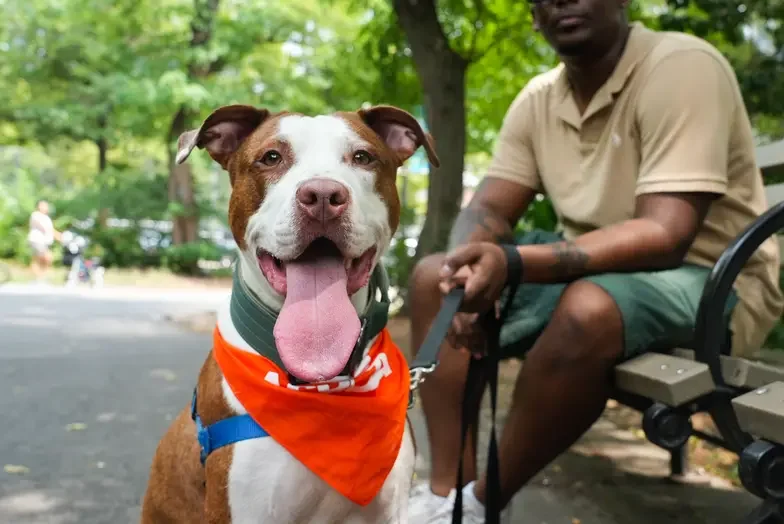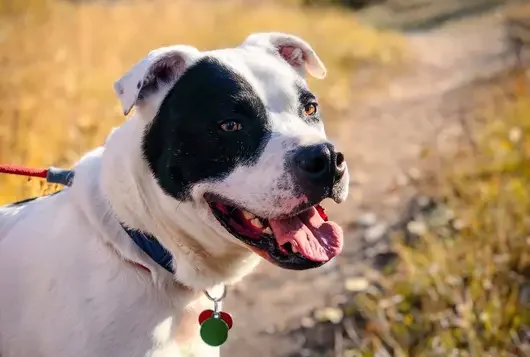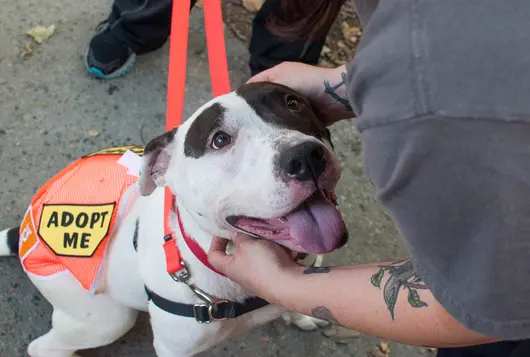How to Improve Meet-and-Greet Experiences to Help Pets Get Adopted

Meet-and-greets and adoption counseling are crucial steps in helping pets find homes. Whether it’s in person or online, that first meeting can make all the difference. Research has shown that:
- Some adopters are motivated by a deeper empathy for the animal’s experience and may be drawn to pets with visible challenges or compelling backstories
- Attachment is driven more by perception than objectivity—if the adopter thinks the animal is cute, that matters more than other personality traits or whether their needs are a lifestyle fit.
- While trends exist in adopter preferences, individual and cultural variation is high—so successful adoptions are all about matchmaking.
- Traits seen as negative by one person can become selling points for the right adopter. A vocal husky or high-energy terrier may be exactly what an enthusiast of that breed may be looking for.
Despite these research findings, there are several approaches to improve the chances of potential adopters leaving with a pet. The ASPCA has applied research on what helps pets get adopted more quickly to enhance their meet-and-greets. Here are simple, proven tips to make meet-and-greets better and help more pets get adopted – whether meetings are at an event, in the shelter or through a virtual visit.
Meet-and-Greet Tips (Do’s)
- Add a collar or cute toy: Try a bandana with your shelter’s logo or a favorite toy to keep their attention. Even if the animal doesn’t play with it, toys make the kennel look more fun and can help increase adoptions.
- Use a familiar space (and scent): Meet in a place the pet knows to help them feel safe and show their true personalities. Place a blanket from the pet’s kennel near the adopter to help them rest near the potential adopter.
- Use positive, clear and accurate terms: Utilize a language guide and tips sheet for staff and volunteers. Avoid using negative labels.
- Point out cute or special features: Highlight a dog’s smile, a cat’s bright eyes or special tricks or behaviors they know.
- Groom the pet: A clean pet looks and feels better. It also makes for great pictures!
- Prepare pets for meet-and-greets:
- For dogs:
- Use simple techniques like: “fly-by treats” (drop treats as you walk by to build positive feelings) or “four on the floor” (reward dogs for keeping all paws on the ground before leashing). Watch these trainings for more tips. Reward quiet behavior and friendly greetings.
- Follow a routine to help dogs show their best behavior during meet-and-greets.
- For cats:
- Give treats or play near the front of the kennel to help cats come forward.
- Use a quiet, enriched space with soft beds or toys.
- Try the “slow blink test” – Blinking helps cats feel more relaxed, which will prepare them to meet new people. If a cat slowly blinks back at you, they may be relaxed and ready to meet adopters.
- For dogs:
Virtual Meet-and-Greets
- Show the pet clearly: Avoid showing the pet behind bars. Use an office, play space or during a walk instead.
- Make eye contact easy: Eye contact increases the chance of adoption, so hold a treat or toy above the camera to help the pet look at the screen. Practice this before the meet to get the animal used to new items.
- Give extra cues for cats: Be sure to explain the fact that cats are often scared of new things and may not show their true selves virtually.
Meet-and-Greet Mistakes (Don’ts)
- Staff get more attention than the adopter: Give adopters treats and toys to use so the pet bonds with them. When possible, allow adopters 1:1 time with the animal.
- Pet ignores the adopter: Teach pets to look at people by rewarding eye contact.
- Negative labels: Avoid calling pets “stray” or using breed labels when the breed is unknown. Consider using “mixed breed” or saying something like, “This pet’s story is a mystery, but here’s what we know.”
While these tips can help, be sure to listen to your customers and staff about what works and what doesn’t. Practicing these tips helps prepare pets (and staff and volunteers) by letting them get used to meet-and-greet spaces and technology ahead of time. The more comfortable they are, the better they’ll shine and secure more adoptions.
Related Resources
- Matchmaking Made Easy: Conversational, Nonjudgmental Adoption Counseling Tips & Language Guide
- Marketing Checklist for Animal Shelters and Rescues
Research References
- Picture Perfect Pups: How Do Attributes of Photographs of Dogs in Online Rescue Profiles Affect Adoption Speed?, Nakamura, M., Dhand, N., Wilson, B. J., Starling, M. J., and McGreevy, P. D., 2020.
- Descriptive Texts in Dog Profiles Associated With Length of Stay via an Online Rescue Network, Nakamura, M., Dhand, N. K., Starling, M. J., and McGreevy, P. D., 2019.
- Perception of Cats: Assessing the Differences Between Videos and Still Pictures on Adoptability and Associated Characteristics, Schoenfeld-Tacher, R., Kogan, L. R., and Carney, P. C., 2019.
- Investigating the Impact of Indemnity Waivers on the Length of Stay of Cats at an Australian Shelter, Pockett, J., Orr, B., Hall, E., Chong, W. L., and Westman, M., 2019.
- Population Characteristics of Cats Adopted From an Urban Cat Shelter and the Influence of Physical Traits and Reason for Surrender on Length of Stay, Miller, H., Ward, M., and Beatty, J. A., 2019.
- Showcasing Adoptable Pets Through Photos and Videos: Increasing Visibility, Interest, Traffic and Maybe Adoptions Too, Dowling-Guyer, S., 2018.
- What Makes a Dog Adoptable? An Eye-Tracking Investigation, Isgate, S., and Couchman, J. J., 2018.
- Using Free Adoptions to Reduce Crowding and Euthanasia at Cat Shelters: An Australian Case Study, Crawford, H. M., Fontaine, J. B., and Calver, M. C., 2017.
- Effects of Video Footage Versus Photographs on Perception of Dog Behavioral Traits, Pyzer, C., Clarke, L., and Montrose, V. T., 2017.
- Preference Assessments and Structured Potential Dog-Adopter Interactions Increase Adoptions, Protopopova, A., Brandifino, M., and Wynne, C. D., 2016.
- Judging a Dog by Its Cover: Morphology but Not Training Influences Visitor Behavior Toward Kenneled Dogs at Animal Shelters, Protopopova, A., and Wynne, C. D., 2016.
- Factors Affecting the Selection of Cats by Adopters, Sinn, L., 2016.
- Speed of Dog Adoption: Impact of Online Photo Traits, Lampe, R., and Witte, T. H., 2015.
- An Evaluation of the Role the Internet Site Petfinder Plays in Cat Adoptions, Workman, M. K., and Hoffman, C. L., 2015.
- Is There a Bias Against Stray Cats in Shelters? People's Perception of Shelter Cats and How It Influences Adoption Time, Dybdall, K., and Strasser, R., 2014.
- Factors That Influence Adopters’ Preference of Shelter Dogs, Thorn, J. M., and Mitchell, J. T., 2013. Journal of Veterinary Behavior: Clinical Applications and Research, Vol. 4, No. 8, e41–e42.
- Dog Breed Stereotypes and Effects of Handler Appearance on the Perception of Pit Bulls, Gunter, L., 2013, July. Presented at the 22nd Annual Conference of the International Society of Anthrozoology, Chicago, IL.
- Why Did You Choose This Pet? Adopters and Pet Selection Preferences in Five Animal Shelters in the United States, Weiss, E., Miller, K., Mohan-Gibbons, H., and Vela, C., 2012.
- The Effects of Social Training and Other Factors on Adoption Success of Shelter Dogs, Protopopova, A., Gilmour, A. J., Weiss, R. H., Shen, J. Y., and Wynne, C. D. L., 2012.
- Factors Relevant to Adoption of Cats in an Animal Shelter, Fantuzzi, J. M., Miller, K. A., and Weiss, E., 2010.
- The Effects of Training and Environmental Alterations on Adoption Success, Luescher, A. U., and Medlock, R. T., 2009.
- The Effect of Housing and Handling Practices on the Welfare, Behaviour and Selection of Domestic Cats (Felis sylvestris catus) by Adopters in an Animal Shelter, Gourkow, N., and Fraser, D., 2006.
- The Behavior of Dogs in a Rescue Shelter, Wells, D., and Hepper, P. G., 1992.
We have lots more on this subject:


